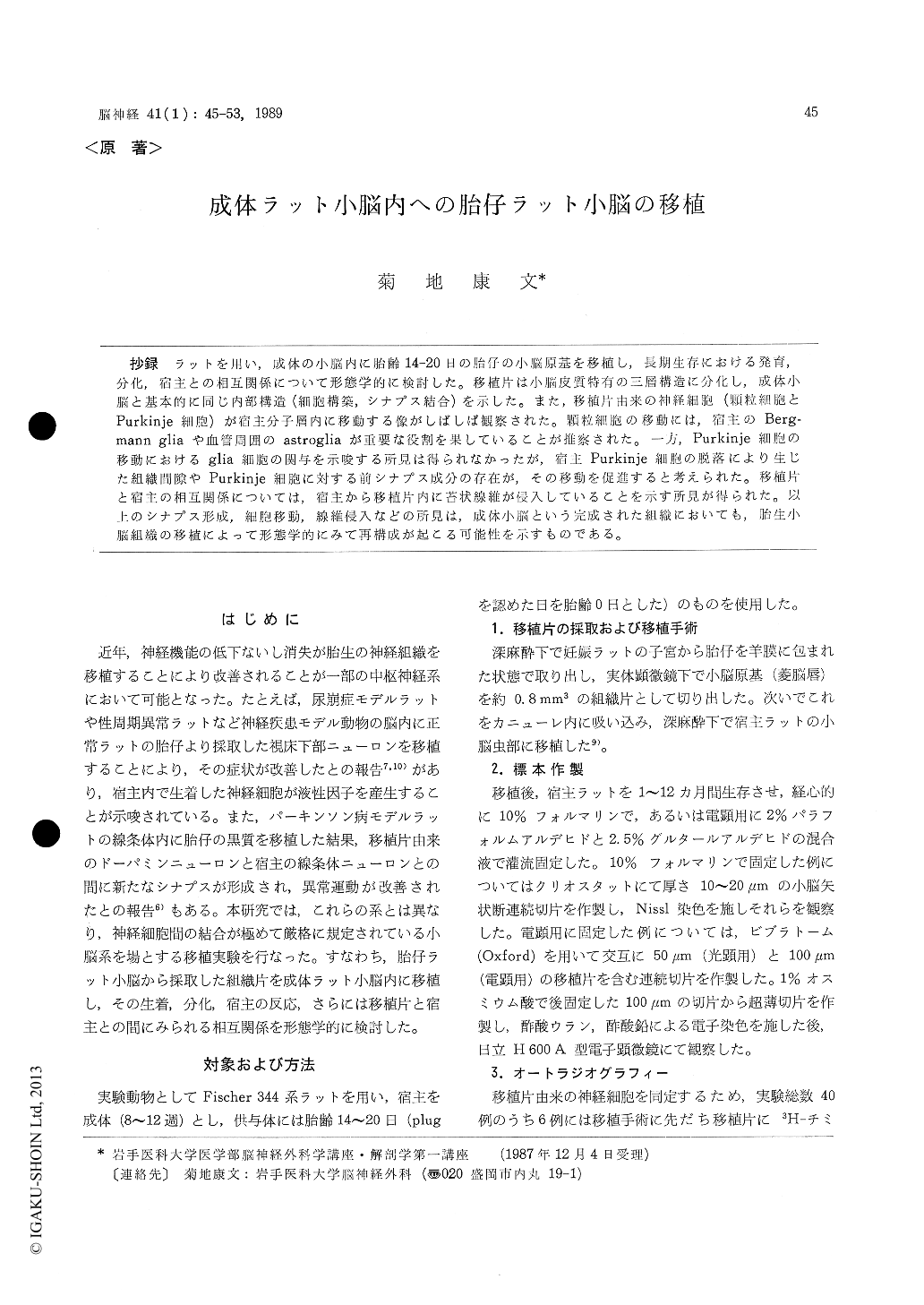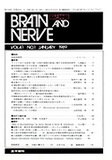Japanese
English
- 有料閲覧
- Abstract 文献概要
- 1ページ目 Look Inside
抄録 ラットを用い,成体の小脳内に胎齢14-20日の胎仔の小脳原基を移植し,長期生存における発育,分化,宿主との相互関係について形態学的に検討した。移植片は小脳皮質特有の三層構造に分化し,成体小脳と基本的に同じ内部構造(細胞構築,シナプス結合)を示した。また,移植片由来の神経細胞(顆粒細胞とPurkinje細胞)が宿主分子層内に移動する像がしばしば観察された。顆粒細胞の移動には,宿主のBerg-mann gliaや血管周囲のastrogliaが重要な役割を果していることが推察された。一方,Purkinje細胞の移動におけるglia細胞の関与を示唆する所見は得られなかったが,宿主Purkinle細胞の脱落により生じた組織間隙やPurkinje細胞に対する前シナプス成分の存在が,その移動を促進すると考えられた。移植片と宿主の相互関係については,宿主から移植片内に苔状線維が侵入していることを示す所見が得られた。以上のシナプス形成,細胞移動,線維侵入などの所見は,成体小脳という完成された組織においても,胎生小脳組織の移植によって形態学的にみて再構成が起こる可能性を示すものである。
Cerebellar primordia of rat embryos (embryonic days of 14-20) were transplanted into mature cere-bella of normal adult rats (Fischer 344). After 1-12 months, animals were sacrificed, and the de-velopment of grafts and the interaction between host and graft were examined by light and elec-tron microscopy. Grafts from E 14 rat cerebella showed the highest survival rate (85%), which decreased with increasing donor age. In some experiments, the donor tissue developed and differ-entiated to form folia with the trilaminar organiza-tion of the cerebellar cortex. Synaptic connec-tions between neuronal elements in the graft show-ed basically the normal pattern. Thus, mossy ter-minals formed synaptic contacts with dendrites of granule cells, and axons of basket cells made synaptic contacts with somata of Purkinje cells. Many spines of Purkinje dendrites were contacted with parallel fibers, while others were surrounded by processes of astroglia.
Migration of donor Purkinje and granule cells in the host molecular layer was frequently ob-served. Some donor granule cells, implanted in the superficial aspect of the host molecular layer, migrated down along processes of Bergmann glia, which resembled the migration pattern of the nor-mal development. Other granule cells attached to neuroglial processes which ensheathed capillary walls. While the migration of granule cells was found to be glial-dependent, the glial role in the migration of Purkinje cells was not clear. Pur-kinje cells probably migrated into the host mole-cular layer under favorable conditions where the loss of host Purkinje cells had been occurred to some extent and consequently followed by the in-crease of free axon endings of parallel fibers and interneurons of the host.
Mossy fiber terminals containing large densecored vesicles, indicative of 5-HT mossy fibers, were frequently observed in the donor granular layer. It was likely that they invaded the graft from the host, because the graft had contained no 5-HT neurons.
The present findings obtained in the cerebellar grafting may imply the possibility of reorganiza-tion of the injured adult cerebellum.

Copyright © 1989, Igaku-Shoin Ltd. All rights reserved.


